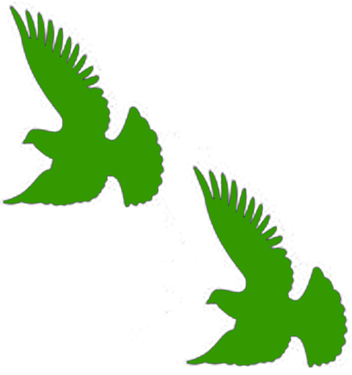Q: How do I decide which young birds to move to the old bird team at the end of the season?
Which pigeons should graduate from the young bird team to the old bird team in the fall of the year is an overwhelming dilemma for many fanciers. This really should not be that big of a problem.
First of all, let's suppose that you have 24 nest boxes for your old bird team. Most lofts will be hard pressed to have retained 1/3 of last year's old bird team. When I say retained, I do not mean that there is a problem of having 8 old cock birds left. What I mean is that there seldom are 8 cock birds you can identify as very good birds at that point. You will not have 8 old birds that are winners or realistically still have the potential of being first place winners or outstanding birds.
Most people could easily boil this down to 4 or 5 old birds of champion caliber. You will have determined this by their performance over several years of flying. Anything that has not come up to this standard now has to be replaced by a younger bird with potential. Remember, you are not looking for a pigeon that just comes home -- you are looking for an outstanding athlete.
Having made that assumption, there now is room for approximately 16 yearling cocks and 16 yearling hens. The easiest way to choose your team is to set up some show cages -- perhaps you can go to your club house when it is empty. First take your favorite 4 or 5 cock birds out of your baskets and put them into the show cages. When I say favorite, that's just what I mean. I leave that up to you. You set the criteria, you make your choice -- it's not what anyone else thinks. You don't have to please anyone else.
If the pigeon is a repeated winner, it will be one of your favorites. If the pigeon is tame or has some other personality trait that you like, it will be one of your favorites and it stays. If the pigeon is white and is your wife's pride and joy, it will be one of your favorites and it stays. You do not want to dispose of a bird that you really like for any reason. Obviously the birds that have flown well repeatedly during the young bird season will fall in this group.
Chances are you are now at the point of having room for 8 or 10 more. Now start at the other end of the spectrum. Put your least desirable pigeon into the other end of the show cages. Least desirable, because he repeatedly gets sick -- or a bird that has been late several times in the races -- certainly a bird that is wild in the loft and flies in your face -- certainly the bird that did not recuperate as quickly after a race as the others. If you have a bird with hard, dry feathers, he also qualifies for this group. All of a sudden, you will find yourself having put more birds in the bottom group than you thought.
So at this point, you reverse the process and you pick the best of the bottom group to fill in your empty nest boxes. You will find that this method of selection, even by the greatest of amateurs, is better than trying to use an outside grader who knows nothing about your birds, but wants to impress you with his knowledge.
One other thing -- once you have reached your magic number of one cock bird per nest box, eliminate the rest of them the same day. Do not procrastinate or start doubting yourself. Should something go wrong with one or 2 birds, such as a hawk having dinner at your expense, then you just close up a nest box for the year. This type of organization and control will give you much more pleasure than the chaos of having extra birds.
The most important criteria when selecting birds for next year's team is that you end up with birds that are pleasing to you and that you want to work with. If you do not like your birds, you certainly will not enjoy them, nor will they perform for you as a team. After all, you will be cleaning up after these birds for the entire winter, and that is not a nice chore if you do not like the inhabitants of your loft.
